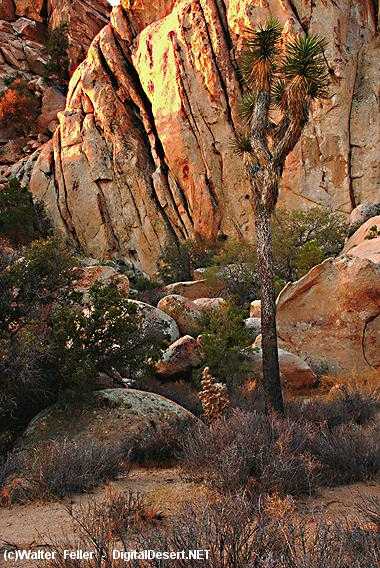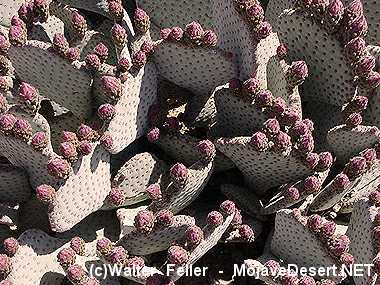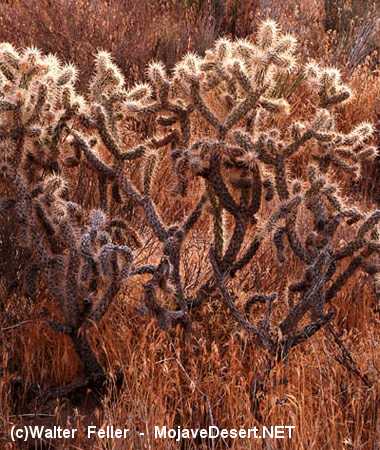Mojave Desert Plants
Many may conceptualize the California desert as a desolate place, controlled by the dominant shrub, the creosote bush (Larrea tridentata); to the inquisitive, though, it has a surprisingly wide array of plant life. In fact, large areas of sand and rock have scores of plant types influenced by weather, soil, and height of this particular place. The Mojave Desert contains many species that live only in this special ecoregion.A New Change in Desert Plants
The desert plants we see today are relatively recent, having changed over the last 10,000 years to adapt to a different environment. During cooler and wetter times, plants such as pinyon pines (Pinus monophylla and P. edulis) and junipers (Juniperus species) were found in the lower valleys, thriving around freshwater lakes that no longer exist. As the climate became hotter and drier, these trees retreated to higher elevations, allowing more heatand drought-tolerant plants to dominate the lowlands.The Vegetation of the Mojave and Colorado deserts
The flora of the California deserts as we see it today is of relatively recent origin, developing in response to rapid drying and warming trends over the past 10,000 years. ...General
| Trees | Shrubs | Cactus |
| Wildflowers | Salt Marsh | Soil Crusts |
The Different Plants in the Mojave
The Mojave and surrounding Colorado Desert are a very interesting place where plants have intelligent ways of surviving. There are tall Joshua trees (Yucca brevifolia), spiky cholla cacti (Cylindropuntia spp.), and delicate desert wildflowers, with each plant finding its way to grow. These plants live in different places, from salty marshes to rough mountain slopes, each having its own group of plants.Adaptations and Uses Desert plants have wonderful mechanisms to survive heat, dry conditions, and poor soil. Many have thick, waxy coatings on their surfaces, or very long roots, while some can store water within their bodies. Native people have used these plants for food, medicine, and tools for a very long time, showing how well humans can get along with desert environments. Learning about the plants in the Mojave is not only about how they survive but also about how they thrive despite challenges. If you explore this tough but lovely area with an open mind, you can discover its rich history of plants and the complex life that lives there.
Where to See Mojave Flora
Death Valley National Park:
Known for extreme conditions and seasonal wildflower blooms.Mojave National Preserve:
It contains famous Joshua tree woodlands and pinyon-juniper woodlands.Ash Meadows:
A rare desert oasis with springs and unique plant species.Big Morongo Canyon Preserve:
A green place with water in the dry land.Local Flora
| Death Valley | Mojave Preserve | Big Morongo |
| Ash Meadows | Vasquez Rocks | Red Rock (NV) |
| Valley of Fire | Hoover Dam | Grand Canyon |
| Yosemite | Zion |
Ecosystem/Habitat
Ecosystem SubsectionsEcosystem Habitats
Desert Habitats
Special/Miscellaneous
AdaptationsExample Adaptations
Plants and How Indians Used Them
Yucca Clone Rings
Plant Glossary


